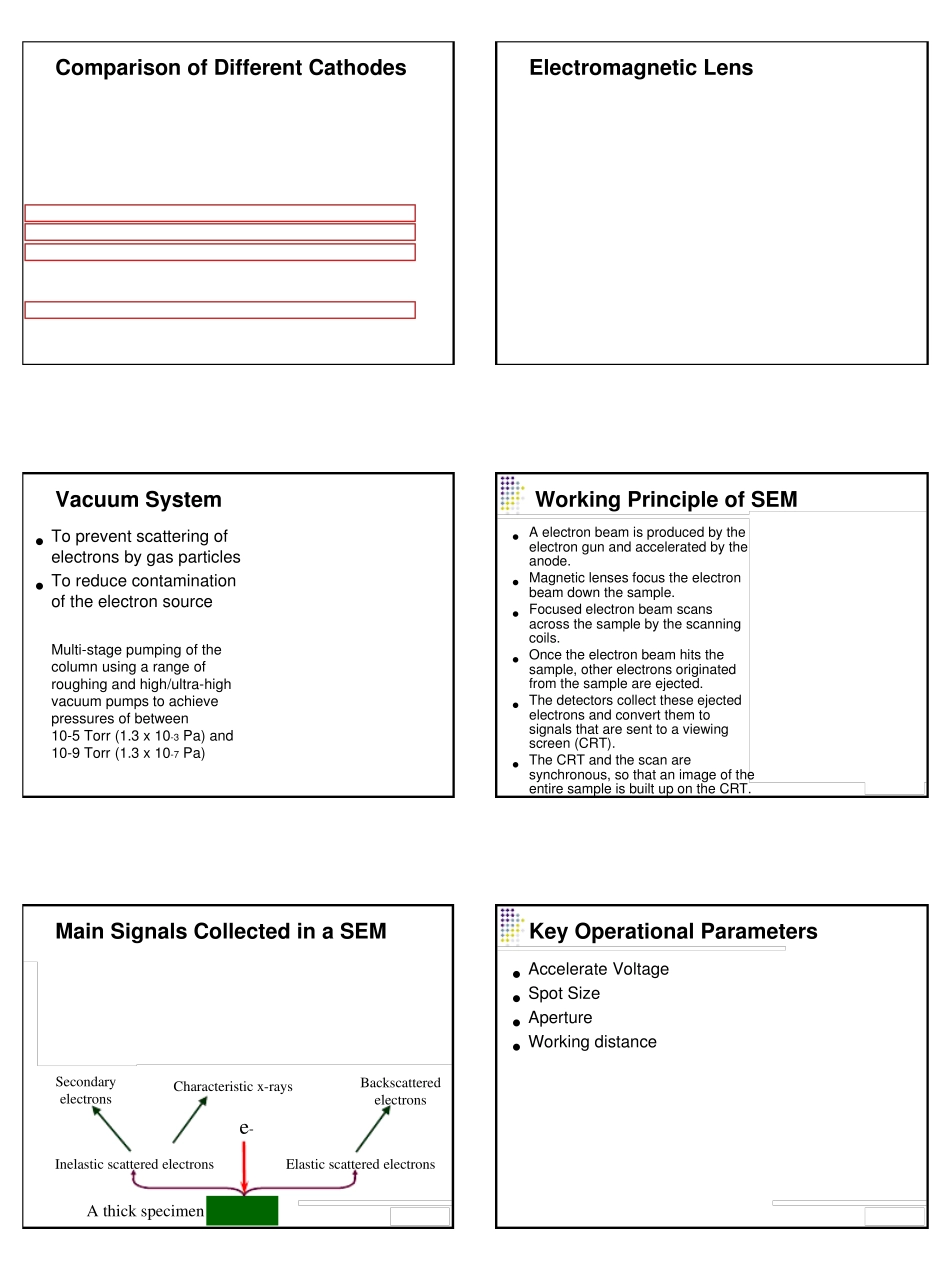Scanning Electron MicroscopyTechnique issuesProf. Jin ZouCentre for Microscopy and MicroanalysisThe University of QueenslandSt Lucia, QLD 4072AustraliaScanning Electron MicroscopesEssential Componentsz Electron gun: In order to extract a lot of electrons from a material, the material we used should have a low work-function, e.g. tungsten. [Work-function: energy (or work) required to withdraw an electron completely from a metal surface. This energy is a measure of how tightly a particular metal holds its electrons.]z Lenses for electrons: As negatively charged particles, electrons can be bent in the magnetic field. For this reason, electron microscopes use magnetic lenses to bend electrons.z Vacuum system: Electrons, very light in mass, will be strongly scattered by gas molecules when they travel in air. In order to avoid it, a vacuum system needs to be built.Electron Gunz Providing electron source z A focussed beam of electrons to strike the specimenz The simplest way (and cheapest) electron gun (Thermionic emission)z A hairpin-shaped tungsten filament –cathodez Wehnelt cylinderz Anode plate100kVElectron Optics - Cathodez Cathode or electron emitterz which is a thermionic electron emission source.z Electron emitters are:-z Thermionic emissionz white-hot tungsten (W) filament – 1mmz lanthanum hexaboride (LaB6) filament, single crystal with 4 polished facesz Field-emissionz Single crystal W, <310>, chemically thinned to about 50nm tipCommonly Used Cathodes (filaments)Tungsten hairpin LaB6 single crystal Field emission tipComparison of Different Cathodes Electromagnetic LensVacuum Systemz To prevent scattering of electrons by gas particlesz To reduce contamination of the electron sourceMulti-stage pumping of the column using a...


